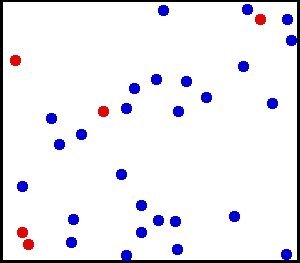New project.
HI Hans and team,
Am trying to make an animation of electron of an atom as a teaching
aid. As a Chemistry teacher, it has been a challenge to make students
imagine of the small electrons moving around the nucleus. I have though
out a simple way using led to represent the electrons while the nucleus
where protons and neutrons which do not move are displayed with an LCD
as well as the Mass Unit(MU).
I have made the code for Hydrogen, this is simple because its led
lighting around a RGB ring.
Here is the code .
#include <Adafruit_NeoPixel.h>
#include <Wire.h>
#include <LCD.h>
#include <LiquidCrystal_I2C.h>
#define PIN 3
#define BRIGHTNESS 30
// How many NeoPixels are attached to the Arduino?
#define NUMPIXELS 8
//////////////////////////////////////////////Define variables for LCD1602//////////////////////////////////////////
#define I2C_ADDR 0x27 //Define I2C Address where the PCF8574A is
#define BACKLIGHT_PIN 3
#define En_pin 2
#define Rw_pin 1
#define Rs_pin 0
#define D4_pin 4
#define D5_pin 5
#define D6_pin 6
#define D7_pin 7
////////////////////////////////////////////////////Initialize the LCD1602///////////////////////////////////////////
LiquidCrystal_I2C lcd(I2C_ADDR, En_pin,Rw_pin,Rs_pin,D4_pin,D5_pin,D6_pin,D7_pin);
// BS E D4 D5 D6 D7
//LiquidCrystal_I2C lcd(7, 8, 9, 10, 11, 12);
void printDetail(uint8_t type, int value);
Adafruit_NeoPixel pixels = Adafruit_NeoPixel(NUMPIXELS, PIN, NEO_GRBW + NEO_KHZ800);
//int delayval = 250; // delay for half a second
void setup()
{
Serial.begin(115200);
Serial.println();
pixels.setBrightness(BRIGHTNESS);
pixels.begin(); // This initializes the NeoPixel library.
lcd.begin (16,2); //Define the LCD as 16 column by 2 rows
lcd.setBacklightPin(BACKLIGHT_PIN,POSITIVE); //Switch on the backlight
lcd.setBacklight(HIGH);
}
void loop()
{
lcd.setCursor(2,0);
lcd.print("Hydrogen Atom");
lcd.setCursor(1,1);
lcd.print("P=1,N=0, MU =1");
for(int i=0; i<=8; i++)
{
// pixels.Color takes RGB values, from 0,0,0 up to 255,255,255
pixels.setPixelColor(i, pixels.Color(0,255,0)); // Moderately bright green color.
pixels.show(); // This sends the updated pixel color to the hardware.
delay(100);
pixels.clear();
//delay(delayval); // Delay for a period of time (in milliseconds).
}
lcd.clear();
}
I have also made for Helium as shared below
#include <Adafruit_NeoPixel.h>
#include <Wire.h>
#include <LCD.h>
#include <LiquidCrystal_I2C.h>
//#define PIN_A
//#define PIN_B
#define PIN 3
#define SDA A4
#define SDL A5
#define PIN 3
//#define PIN_A 8
#define BRIGHTNESS 30
// How many NeoPixels are attached to the Arduino?
#define NUMPIXELS 12
//////////////////////////////////////////////Define variables for LCD1602//////////////////////////////////////////
#define I2C_ADDR 0x27 //Define I2C Address where the PCF8574A is
#define BACKLIGHT_PIN 3
#define En_pin 2
#define Rw_pin 1
#define Rs_pin 0
#define D4_pin 4
#define D5_pin 5
#define D6_pin 6
#define D7_pin 7
////////////////////////////////////////////////////Initialize the LCD1602///////////////////////////////////////////
LiquidCrystal_I2C lcd(I2C_ADDR, En_pin,Rw_pin,Rs_pin,D4_pin,D5_pin,D6_pin,D7_pin);
// BS E D4 D5 D6 D7
//LiquidCrystal_I2C lcd(7, 8, 9, 10, 11, 12);
void printDetail(uint8_t type, int value);
Adafruit_NeoPixel pixels = Adafruit_NeoPixel(NUMPIXELS, PIN, NEO_GRBW + NEO_KHZ800);
//int delayval = 250; // delay for half a second
void setup()
{
Serial.begin(115200);
Serial.println();
pixels.setBrightness(BRIGHTNESS);
pixels.begin(); // This initializes the NeoPixel library.
lcd.begin (16,2); //Define the LCD as 16 column by 2 rows
lcd.setBacklightPin(BACKLIGHT_PIN,POSITIVE); //Switch on the backlight
lcd.setBacklight(HIGH);
}
void loop()
{
Serial.println("Lithium Atom");
lcd.setCursor(2,0);
lcd.print("Helium Atom");
lcd.setCursor(1,1);
lcd.print("P=2,N=2 MU=4");
for(int i=0; i<5; i++)
{
// pixels.Color takes RGB values, from 0,0,0 up to 255,255,255
pixels.setPixelColor(i, pixels.Color(255,0,0)); // Moderately bright green color.
pixels.setPixelColor(5+i, pixels.Color(0,255,0));
pixels.show(); // This sends the updated pixel color to the hardware.
delay(200);
pixels.clear();
//delay(delayval); // Delay for a period of time (in milliseconds).
}
// lcd.clear();
}
my problem which i need assistance is for Lithium and from is i can iterate other atoms up-to Posassium.
I want assisted using the ,millis approach because the delay is not running the leds in a smooth pattern.
lithium code with delay
#include <Adafruit_NeoPixel.h>
#include <Wire.h>
#include <LCD.h>
#include <LiquidCrystal_I2C.h>
#define PIN_A 3
#define PIN_B 4
//#define PIN 7
//#define PIN 8
#define BRIGHTNESS 30
// How many NeoPixels are attached to the Arduino?
#define NUMPIXELS_A 3
#define NUMPIXELS_B 4
//////////////////////////////////////////////Define variables for LCD1602//////////////////////////////////////////
#define I2C_ADDR 0x27 //Define I2C Address where the PCF8574A is
#define BACKLIGHT_PIN 3
#define En_pin 2
#define Rw_pin 1
#define Rs_pin 0
#define D4_pin 4
#define D5_pin 5
#define D6_pin 6
#define D7_pin 7
////////////////////////////////////////////////////Initialize the LCD1602///////////////////////////////////////////
LiquidCrystal_I2C lcd(I2C_ADDR, En_pin,Rw_pin,Rs_pin,D4_pin,D5_pin,D6_pin,D7_pin);
// BS E D4 D5 D6 D7
//LiquidCrystal_I2C lcd(7, 8, 9, 10, 11, 12);
void printDetail(uint32_t type, int value);
Adafruit_NeoPixel pixels_A = Adafruit_NeoPixel(NUMPIXELS_A, PIN_A, NEO_GRBW + NEO_KHZ800);
Adafruit_NeoPixel pixels_B = Adafruit_NeoPixel(NUMPIXELS_B, PIN_B, NEO_GRBW + NEO_KHZ800);
//int delayval = 250; // delay for half a second
unsigned long interval = 100;
unsigned long previousMillis = 0;
//const unsigned long pixel_B = 0;
//unsigned long interval pixel_B = 100;
void setup()
{
//Serial.begin(115200);
// Serial.println();
pixels_A.setBrightness(BRIGHTNESS);
pixels_A.begin(); // This initializes the NeoPixel library.
pixels_B.setBrightness(BRIGHTNESS);
pixels_B.begin(); // This initializes the NeoPixel library.
lcd.begin (16,2); //Define the LCD as 16 column by 2 rows
lcd.setBacklightPin(BACKLIGHT_PIN,POSITIVE); //Switch on the backlight
lcd.setBacklight(HIGH);
}
void loop()
{
if ((unsigned long)(millis() - previousMillis) >= interval) {
previousMillis = millis();
int i,j;
lcd.setCursor(2,0);
lcd.print("Lithium Atom");
lcd.setCursor(1,1);
lcd.print("P=3 N=4 MU=?");
}
for (unsigned int i=0; i<4; i++) for (unsigned int j=0; j<12; j++)
{
pixels_A.setPixelColor(i, pixels_A.Color(255,0,0)); // Moderately bright green color.
pixels_A.setPixelColor(4+i,pixels_A.Color(0,255,0));
// pixels_B.setPixelColor(j, pixels_B.Color(0,0,255(50))); // Moderately bright green color.
// pixels_A.show(); // This sends the updated pixel color to the hardware.
}
// delay(10);
// pixels_A.clear();
// pixels_B.setPixelColor(j, pixels_B.Color(0,0,255)); // Moderately bright green color.
// delay(50);
// pixels_B.show(); // This sends the updated pixel color to the hardware.
// pixels_B.clear();
//for (int j=0; j<12; j++)
// { pixels_B.setPixelColor(j, pixels_B.Color(0,0,255)); // Moderately bright green color.
// pixels_B.show(); // This sends the updated pixel color to the hardware.
// delay(100);
//pixels_B.clear();
//delay(delayval); // Delay for a period of time (in milliseconds).
}
lcd.clear();
}
The atoms have energy levels, in this use case am using rings to represent the energy levels.
For example the first ring with eight leds , 2ndwith 12 leds and so on.
Mega 2650 board, LCD and ws2812 led rings
I would also want to use a push button so that it can change the
elements no. from Hydrogen to Potassium every time you push it.
So the second ring is put on a different pin , so is the third one , on
and on


